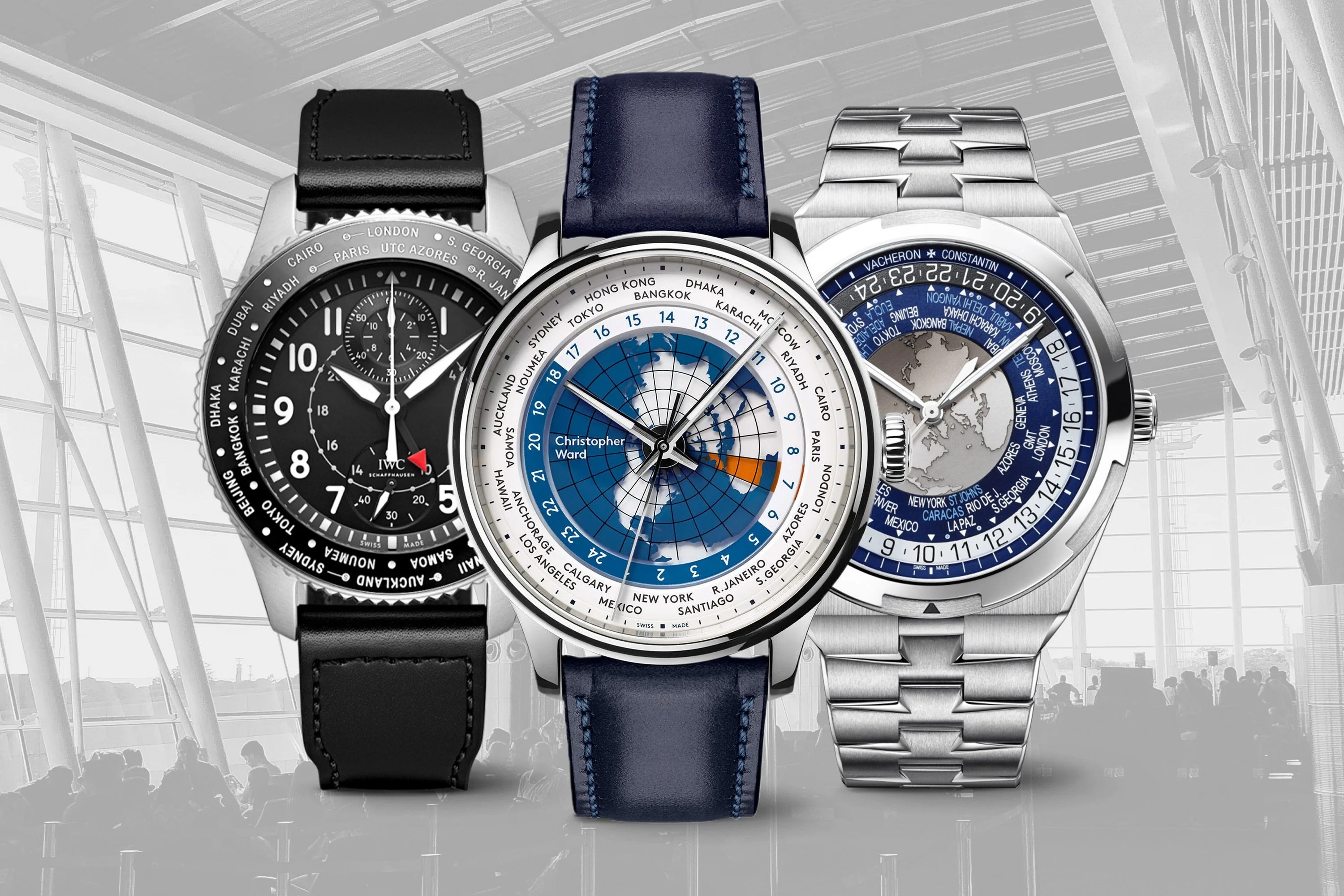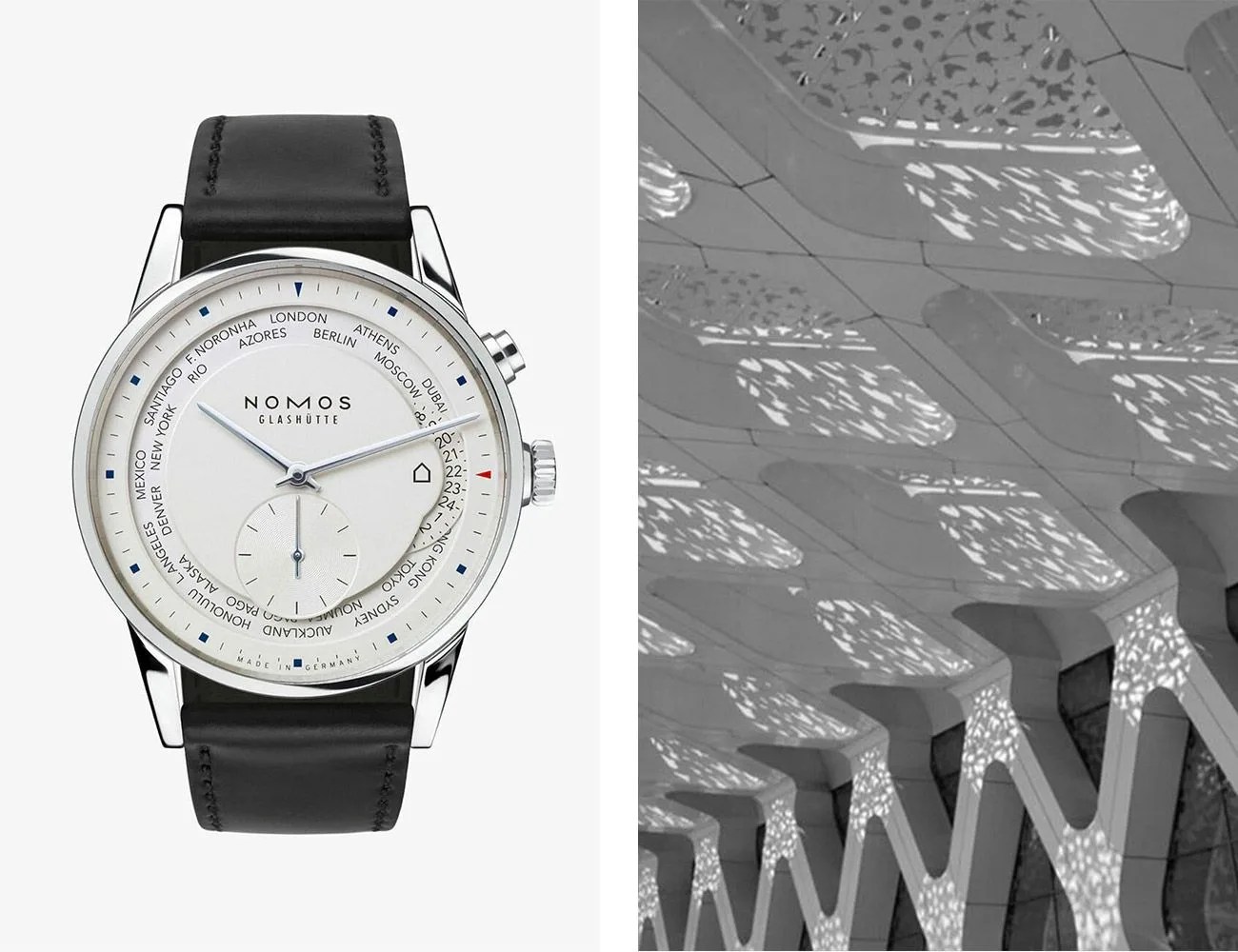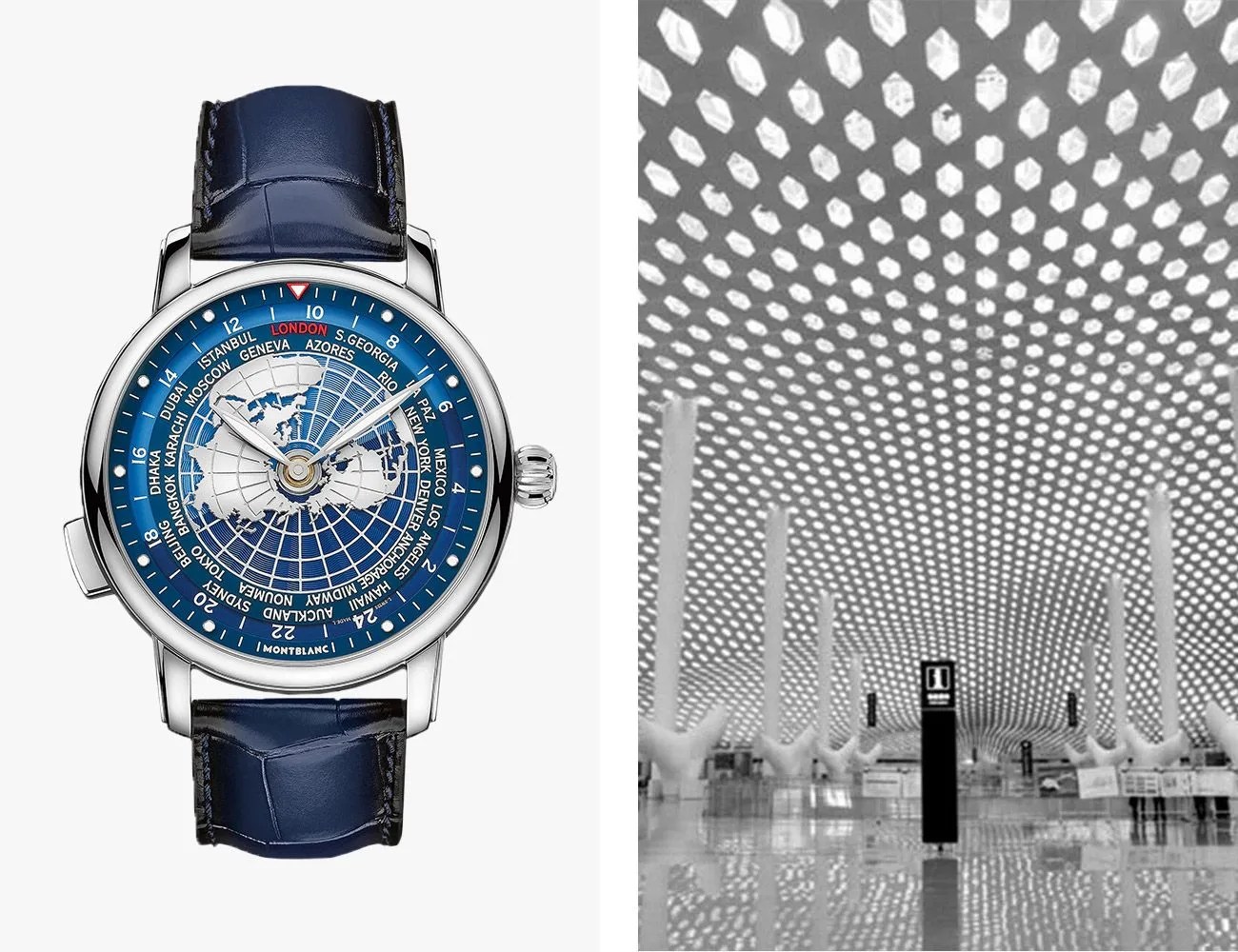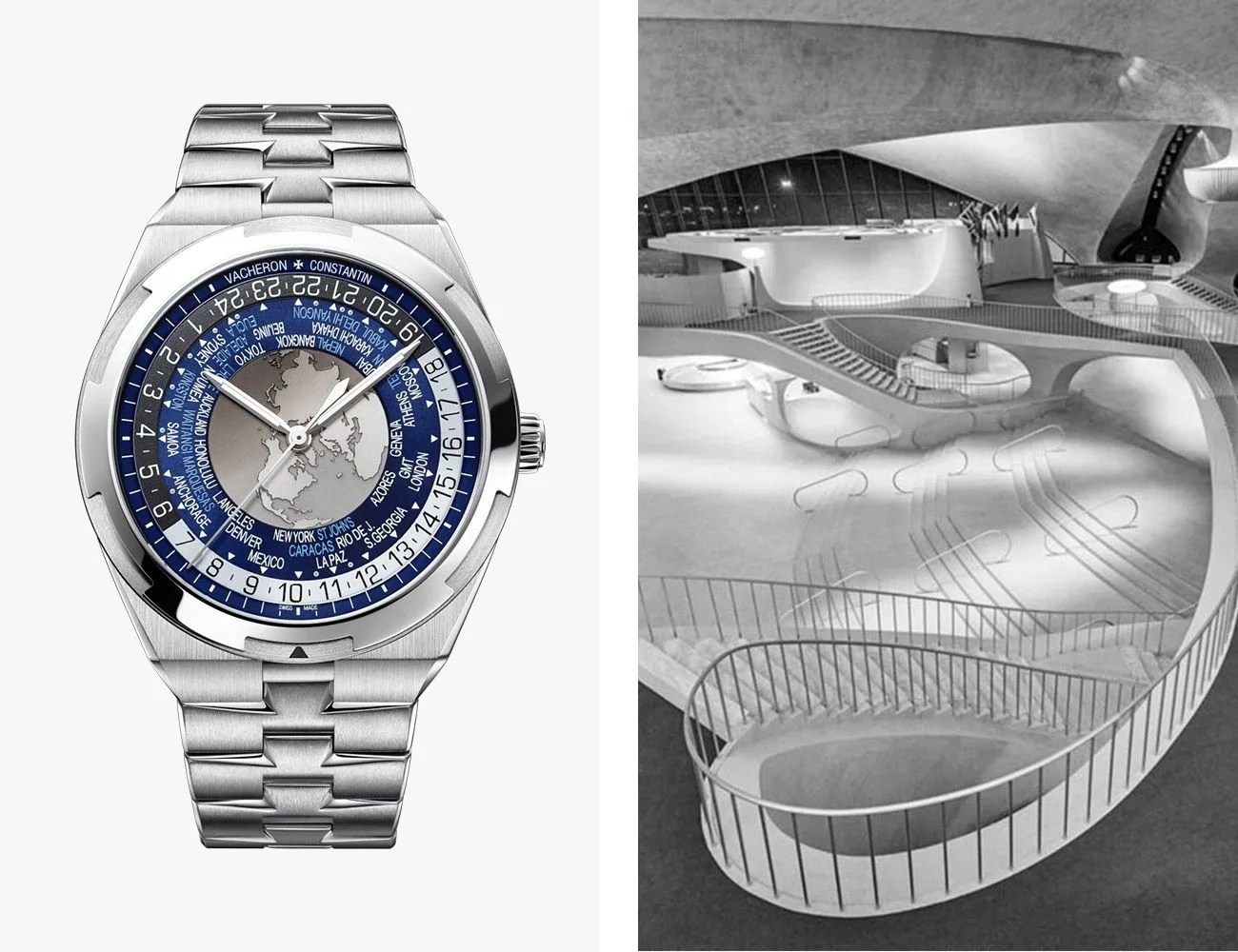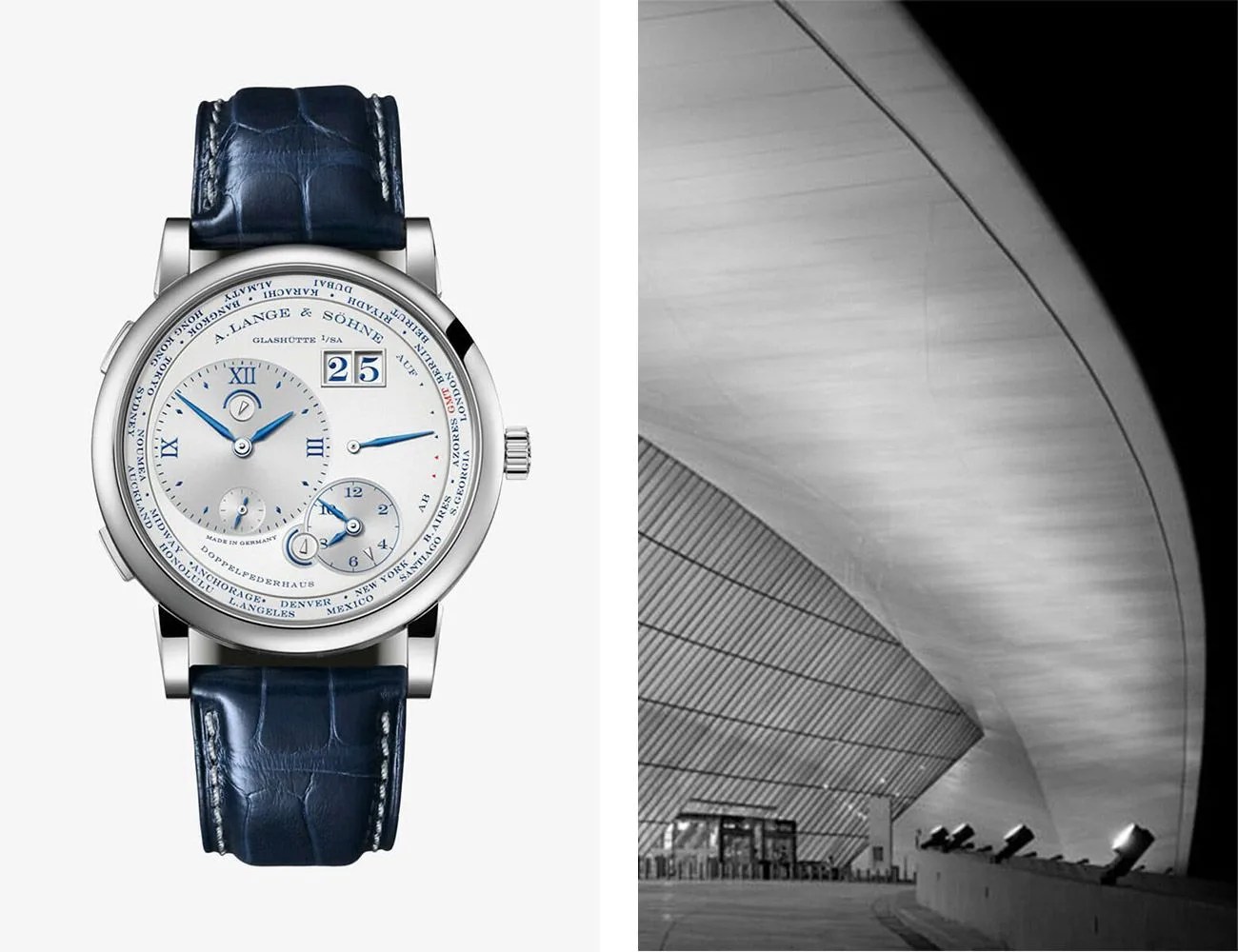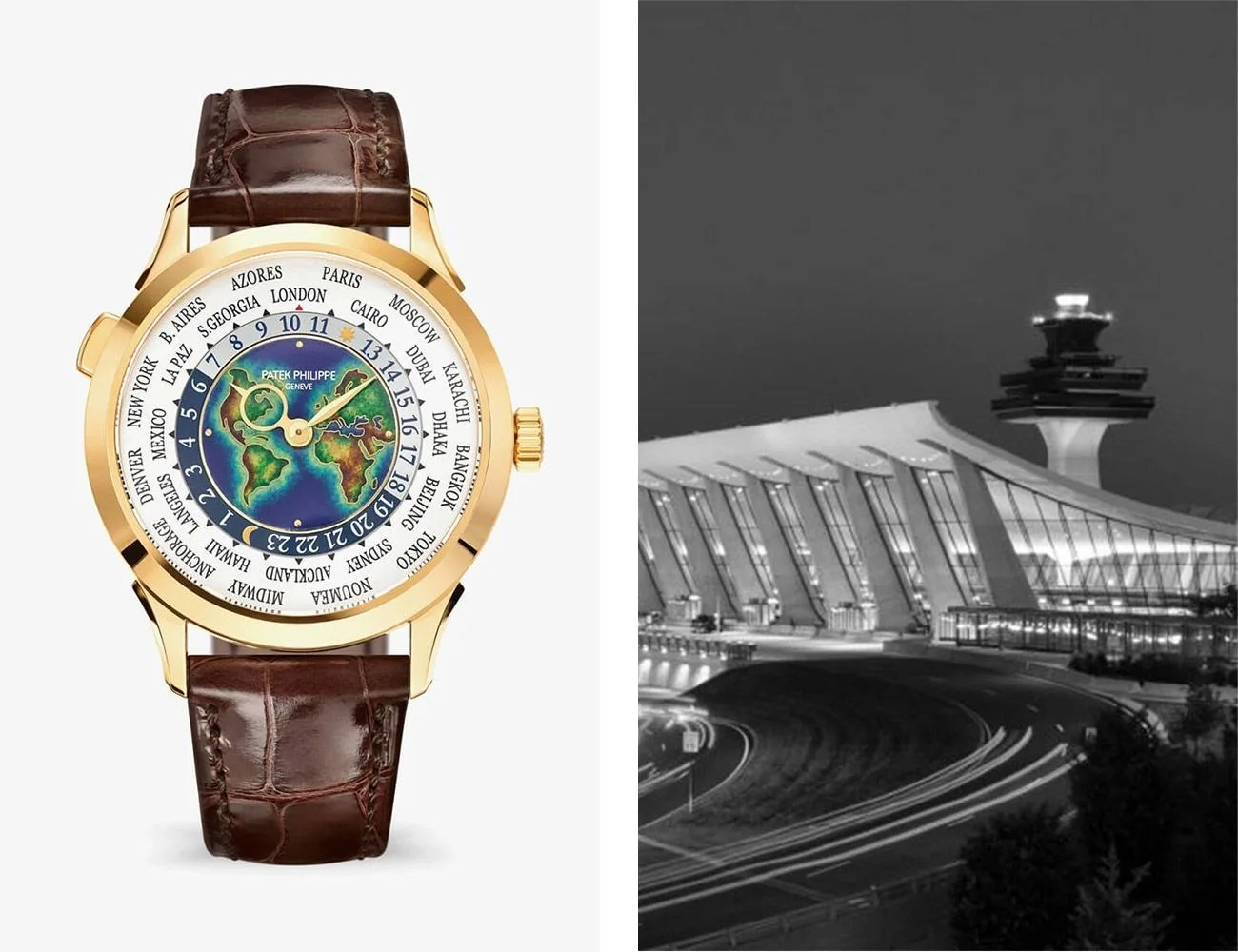You’re flying New York to London, have a phone call with a client in Paris two hours after you land and need to Skype your mother in Minneapolis before you go to bed. Think you can keep it all straight with a jet-lagged brain?
Some people travel a lot and need to keep tabs on different time zones at different hours of the day. And while doing the mental math isn’t that difficult, staying synced with different areas of the earth can be as easy as a glance at your really cool watch.
A world time watch accomplishes a similar task to the GMT or dual timezone; it shows the wearer a time zone in an area of the world other than home. The difference is that whereas the GMT can only monitor one other selected time zone, the world timer shows the time for the main 24 time zones at once.
A world timer features an internal bezel displaying 24 world cities, each representing a different time zone. Next to this is a 24-hour ring (or hand) that makes one full revolution a day. The user sets the time-zone bezel to align their home time zone with the correct hour of the day on the 24-hour ring. As time passes, the 24-hour ring or hand rotates. The point where the 24-hour ring lines up with the time zone you’re looking for shows you the hour of the day.
The complication was developed by independent watchmaker Louis Cottier in the early 1930s, and was quickly adopted by brands like Patek Philippe, Rolex and Vacheron Constantin. It was and remains a fairly complex movement, and as such commands a higher price tag than the similar GMT (developed a couple decades after the world timer), and is harder to find today.
But for the watchmakers who have mastered the world time watch, the results are often stunning. The watch inherently requires a busy dial, but designers and watchmakers manage to organize the business into a beautiful, legible gauge that is particularly useful for jet-setters and adventurers everywhere.
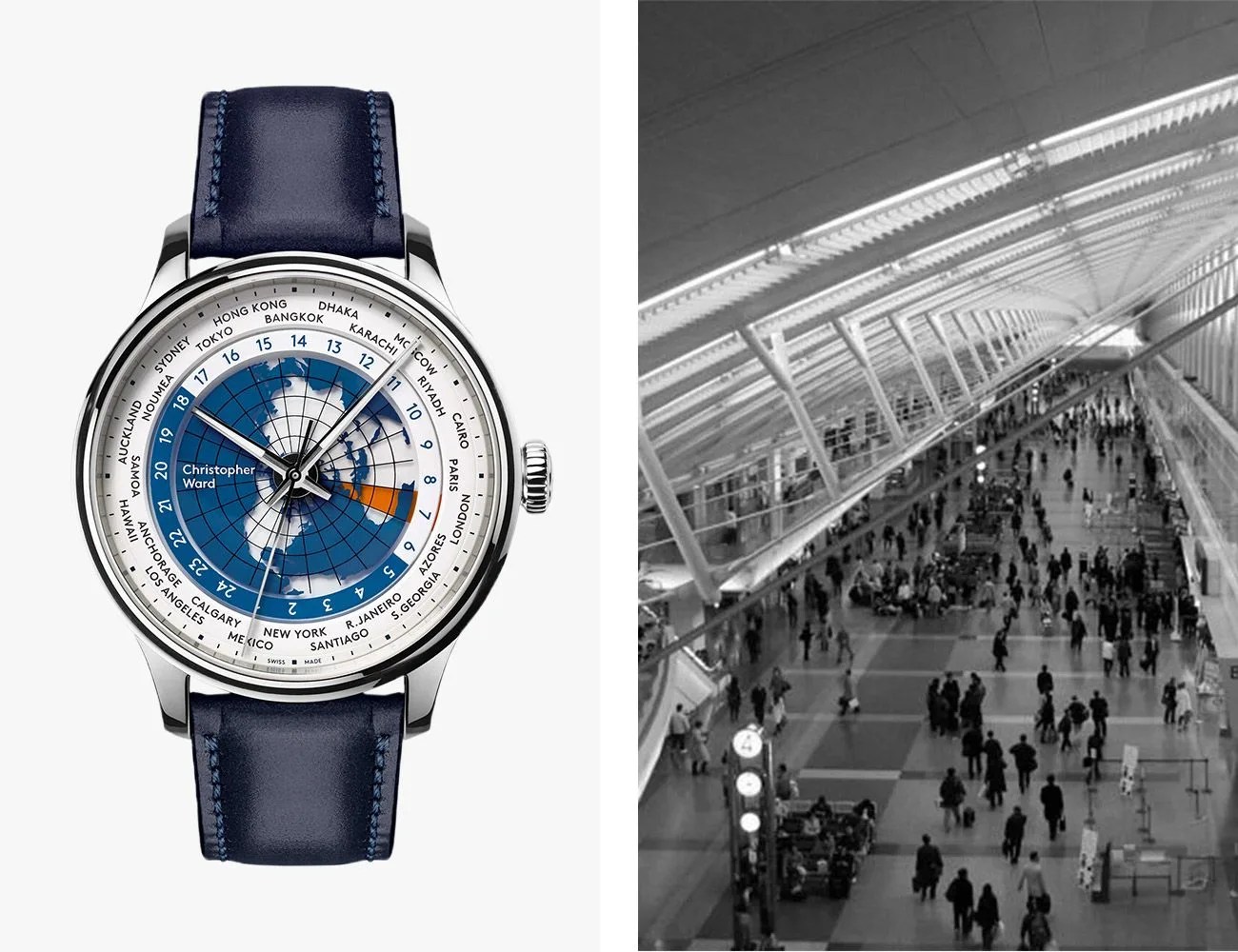 Courtesy
Courtesy